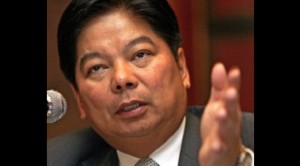The rate of rise in consumer prices decelerated for the second straight month due to the slower-than-usual increase in fuel, power and commodity prices, according to government data released Friday.
Inflation for March eased to 3.9 percent from 4.1 percent in February. This brought the three-month average to 4.1 percent, the Philippine Statistics Authority (PSA) reported.
Inflation peaked this year at 4.2 percent in January.
The figure for March was below the midpoint of the central bank’s projected range of 3.7 to 4.6 percent for the month.
Bangko Sentral ng Pilipinas (BSP) Governor Amando M. Tetangco Jr. reverted to his usual dovish tone, noting that inflation remained manageable for now.
“This is consistent with our assessment, and supports our manageable inflation outlook,” Tetangco said in a statement.
“That said, we will continue to be watchful of global developments—shifts in the Fed stance, geopolitical risks, growth prospects and financial market developments in China,” he said.
Last month, the BSP raised the required amount of deposits banks had to set aside as reserves to 19 percent for universal and commercial lenders as part of efforts to keep liquidity conditions and price pressures in check. The central bank’s move also signaled that authorities would continue to tighten monetary settings after a year and a half of being accommodative.
The deceleration was due to the slower annual hikes posted in the indices of alcoholic beverages and tobacco; housing, water, electricity gas and other fuels; recreation and culture; and restaurant and miscellaneous goods and services.
In the same month of 2013 inflation stood at 3.2 percent, the statistics office said.
“If April inflation decelerates further from Friday’s already lower-than-expected inflation print, the monetary authorities would have a more difficult time justifying an early rate hike and would likely push back outright rate hikes … to the third quarter,” Bank of the Philippine Islands (BPI) lead economist Emilio Neri Jr. said in a note.
“The print also somewhat dilutes the weight of Tetangco’s hawkish statements in late March unless the governor’s message is meant to address excessive market exuberance and not targeted to manage inflation expectations,” he added.
The inflation figure for April will be released in May.
In a separate note, HSBC said the current reprieve from high inflation the country was experiencing after the calamity in November was merely temporary.
This summer, the bank said, the Philippines could suffer from bouts of power outages or a hike in electricity prices.
Food prices are also expected to trek higher due to expectations of a low harvest, leading to tightness in supply. The National Food Authority is now trying to purchase 800,000 tons with an approved $383-million budget between May and August to minimize the impact of the limited harvest.
